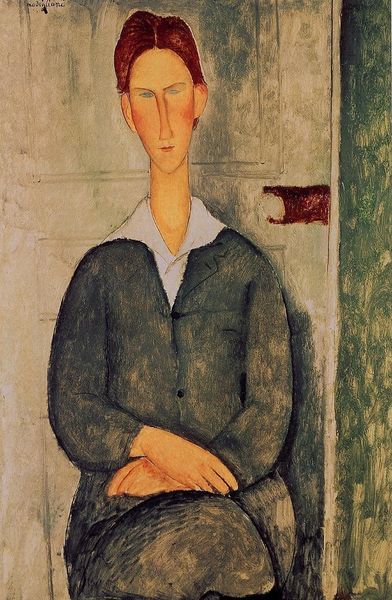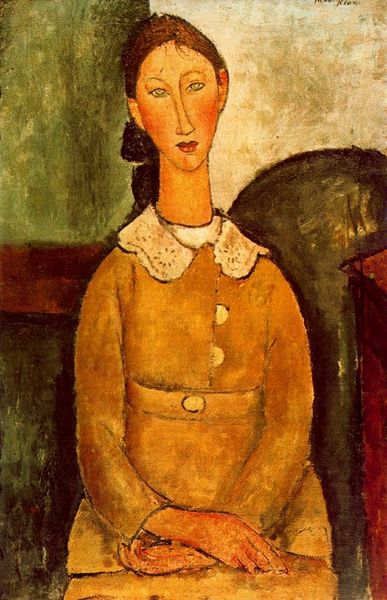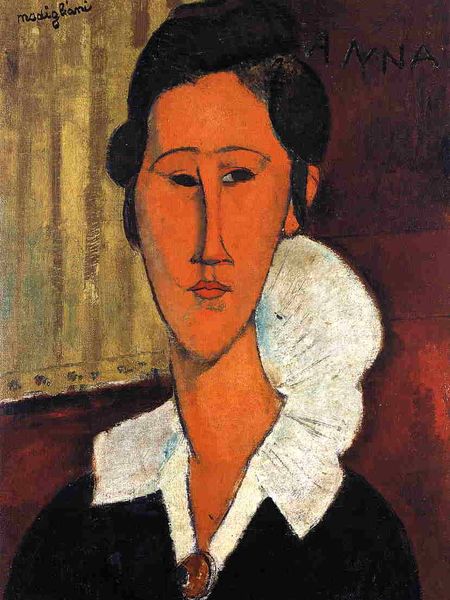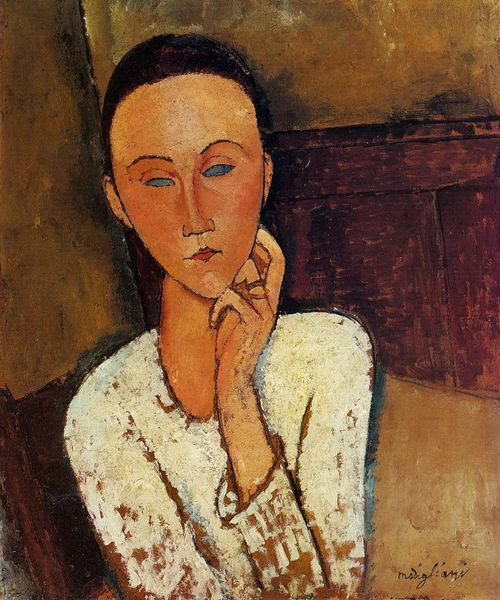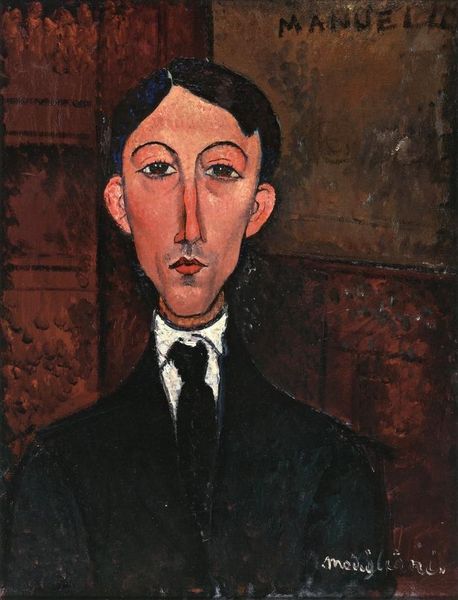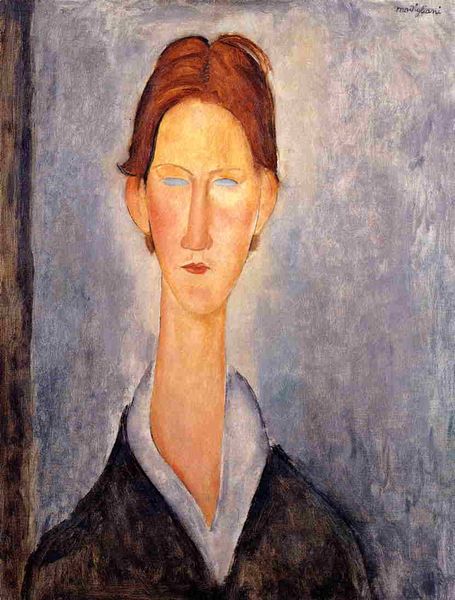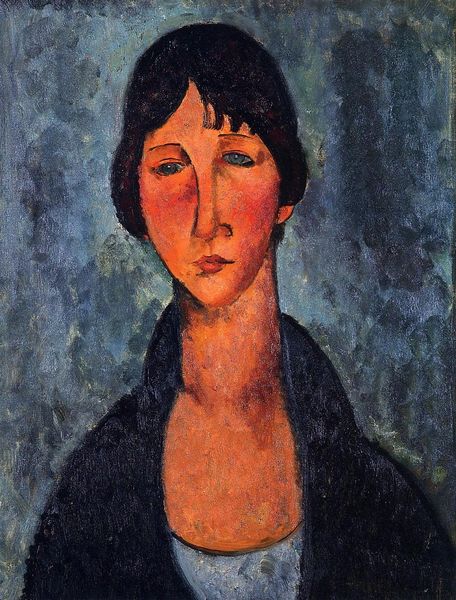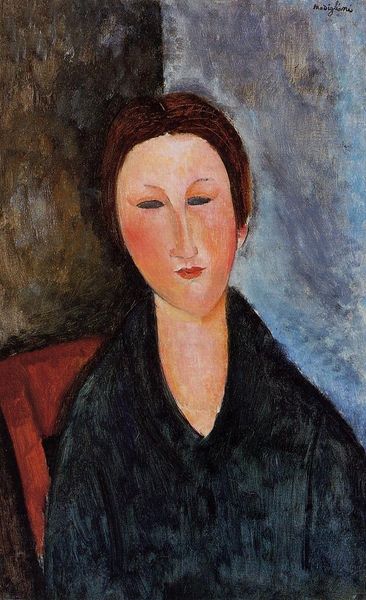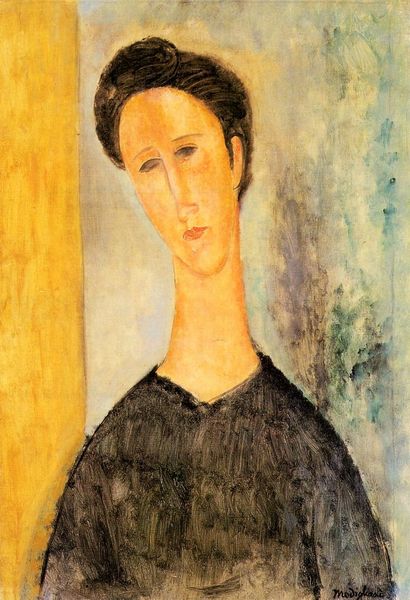
oil-paint
#
portrait
#
oil-paint
#
figuration
#
oil painting
#
famous-people
#
male-portraits
#
italian-renaissance
#
portrait art
#
modernism
Copyright: Public domain
Editor: We’re looking at Modigliani's “Portrait of Jean Cocteau” from 1917, an oil painting currently held in a private collection. It’s striking how elongated and elegant the figure appears. What draws your eye when you consider this portrait? Curator: The severe stylization is the key here. Observe how Modigliani reduces Cocteau's form to its essential geometric components. The elongated neck and face, almond-shaped eyes devoid of pupils – these aren't literal depictions but rather, symbolic representations. The composition itself, built upon vertical and diagonal lines, creates a sense of poised tension. Editor: So you're saying it’s less about capturing likeness and more about something else entirely? Curator: Precisely. Consider the palette—the muted ochres, blues, and browns. These hues don't simply describe color, they contribute to the somber, introspective mood. Modigliani employs a limited range to unify the pictorial space and to subtly convey the intellectual temperament of the sitter. Editor: It almost flattens the space, doesn't it? Is he deliberately avoiding depth? Curator: Indeed. By minimizing the illusion of three-dimensionality, he forces us to confront the two-dimensional surface of the canvas and to focus on the formal relationships between the shapes, lines and colors. Editor: That's fascinating. I was so focused on the slightly unsettling effect of the stretched features, I missed the subtler details. It gives me a whole new way of looking at portraiture. Curator: Yes. It is an approach that emphasizes form and structure over realistic depiction. Modigliani aimed to represent something more profound than superficial resemblance. His aesthetic choices allow for a deeper understanding of the relationship between representation and reality.
Comments
No comments
Be the first to comment and join the conversation on the ultimate creative platform.

